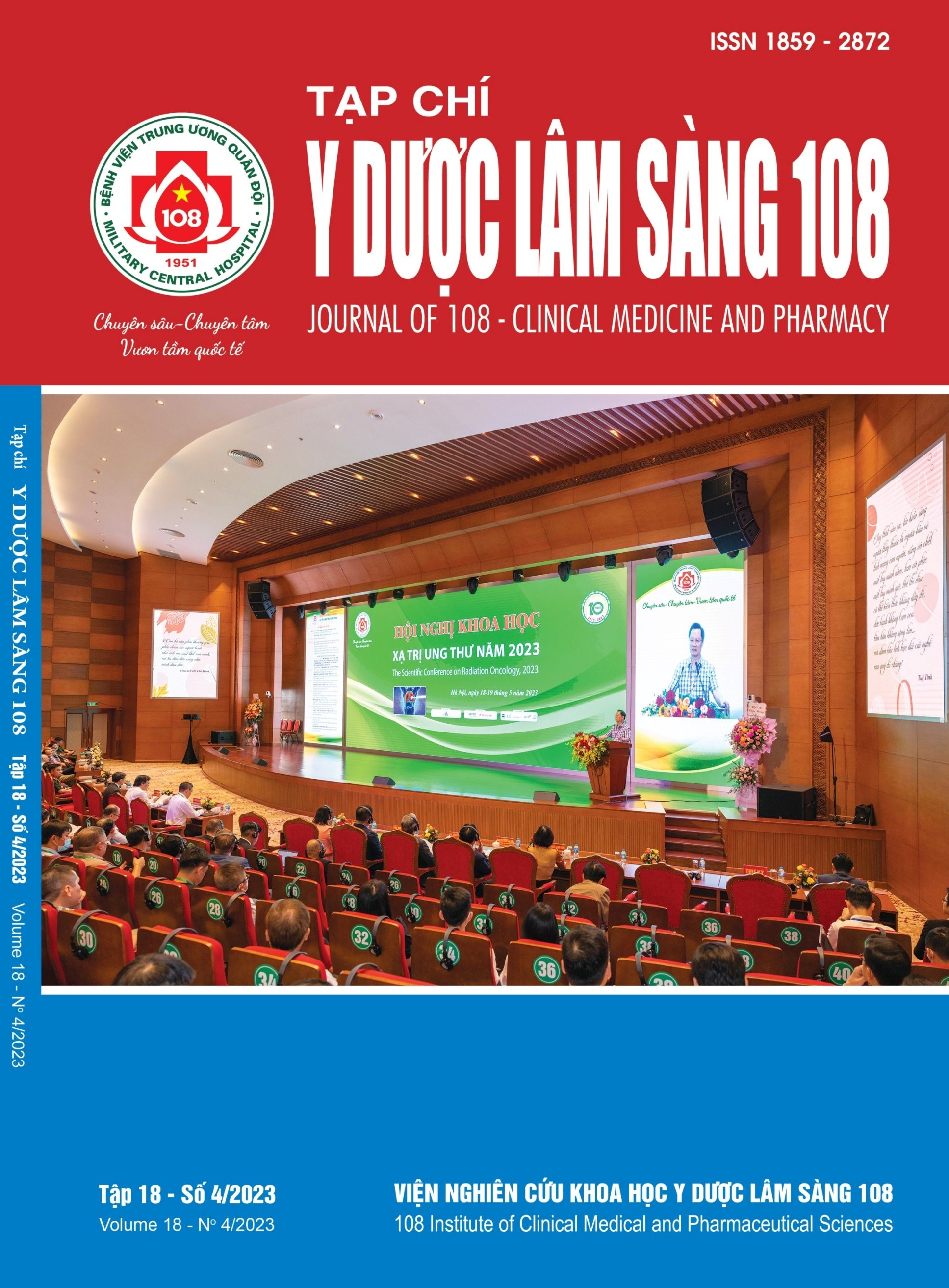Identifying knowledge stroke prevention practice among hypertensive patients who were the X officers treated at 108 Military Central Hospital
Main Article Content
Keywords
Abstract
Objective: To identify knowledge stroke prevention practices among hypertensive patients who were the X patients treated at 108 Military Central Hospital. Subject and method: A cross-sectional descriptive study. Data collection by direct interviews with 726 hypertensive patients who are X patients undergoing inpatient and outpatient treatment at the Institute for Treatment for Senior Military Officers and the Outpatient clinic for X military officers from June 2020 to June 2021, through a pre-prepared assessment questionnaires stroke prevention practices knowledge. Result: Over 87% of the patients changed their living habits and diet but 17.22% and 60.61% of patients didn’t stop smoking and drinking alcohol after having hypertension, respectively. There were 69.97% of the patients measured blood pressure daily. The rate of patients who were combined drugs with lifestyle changes to treat hypertension was 75.07%. 86.77% of patients used antihypertensive drugs as a long – term treatment; 93.66% of patients took drugs directed by the doctors. Conclusion: Nearly three-quarters of hypertensive patients who at 108 Military Central Hospital had a good level at stroke prevention practices. However, the proportion of studied subjects who known how to manage with hypertensive crisis was not high (62%). We must take the actions to overcome that situation in preventing and managing hypertensive crisis.
Article Details
References
2. Nguyễn Minh Hiện và cộng sự (2013) Đột quỵ não. Nhà xuất bản Y học, tr. 64-86.
3. Huỳnh Văn Minh, Phạm Gia Khai, Đặng Vạn Phước, và cộng sự (2018) 2018 VNHA/VSH Guidelines for Diagnosis and Treatment of Hypertension in Adults. Retrieved 14th, February, 2023 from https://www.slideshare.net/tshuynt/2018-vnhavsh-guidelines-for-diagnosis-and-treatment-of-hypertension-in-adults.
4. Greenlund KJ, Neff LJ, Zheng ZJ, Keenan NL, Giles WH, Ayala CA, Croft JB, Mensah GA (2003) Low public recognition of major stroke symptoms. Am J Prev Med 25(4): 315-319.
5. Dar NZ, Khan SA, Ahmad A, Maqsood S (2019) Awareness of stroke and health-seeking practices among hypertensive patients in a Tertiary Care Hospital: A cross-sectional survey. Cureus 11(5): 4774-4774.
6. Trần Hồng Nhung (2014) Kiến thức, thực hành phòng đột quỵ và một số yếu tố liên quan của người cao tuổi phường Đức Giang, quận Long Biên, Hà Nội. Luận văn Thạc sĩ, Đại học Y tế công cộng.
7. Pandian JD, Gall SL, Kate MP, Silva GS, Akinyemi RO, Ovbiagele BI, Lavados PM, Gandhi DBC, Thrift AG (2018) Prevention of stroke: A global perspective. Lancet 392(10154): 1269-1278.
8. Lim JS, Kwon HM, Kim SE, Lee J, Lee YS, Yoon BW (2017) Effects of temperature and pressure on acute stroke incidence assessed using a korean nationwide insurance database. Journal of stroke 19(3): 295-303.
9. Pan B, Jin X, Jun L, Qiu S, Zheng Q, Pan M (2019) The relationship between smoking and stroke. A meta-analysis. Medicine 98(12): 14872. DOI: 10.1097/MD. 0000000000014872.
10. Arisegi SA, Awosan KJ, Oche MO, Sabir AA, Ibrahim MT (2018) Knowledge and practices related to stroke prevention among hypertensive and diabetic patients attending Specialist Hospital, Sokoto, Nigeria. Pan Afr Med J 29: 63.
11. Rajan J, Sakthibalan M, Raj GM, Mangaiarkkarasi A (2019) Knowledge, attitude and practice of hypertension among hypertensive patients in a tertiary care teaching hospital. International Journal of Basic & Clinical Pharmacology 8: 1013.
 ISSN: 1859 - 2872
ISSN: 1859 - 2872
